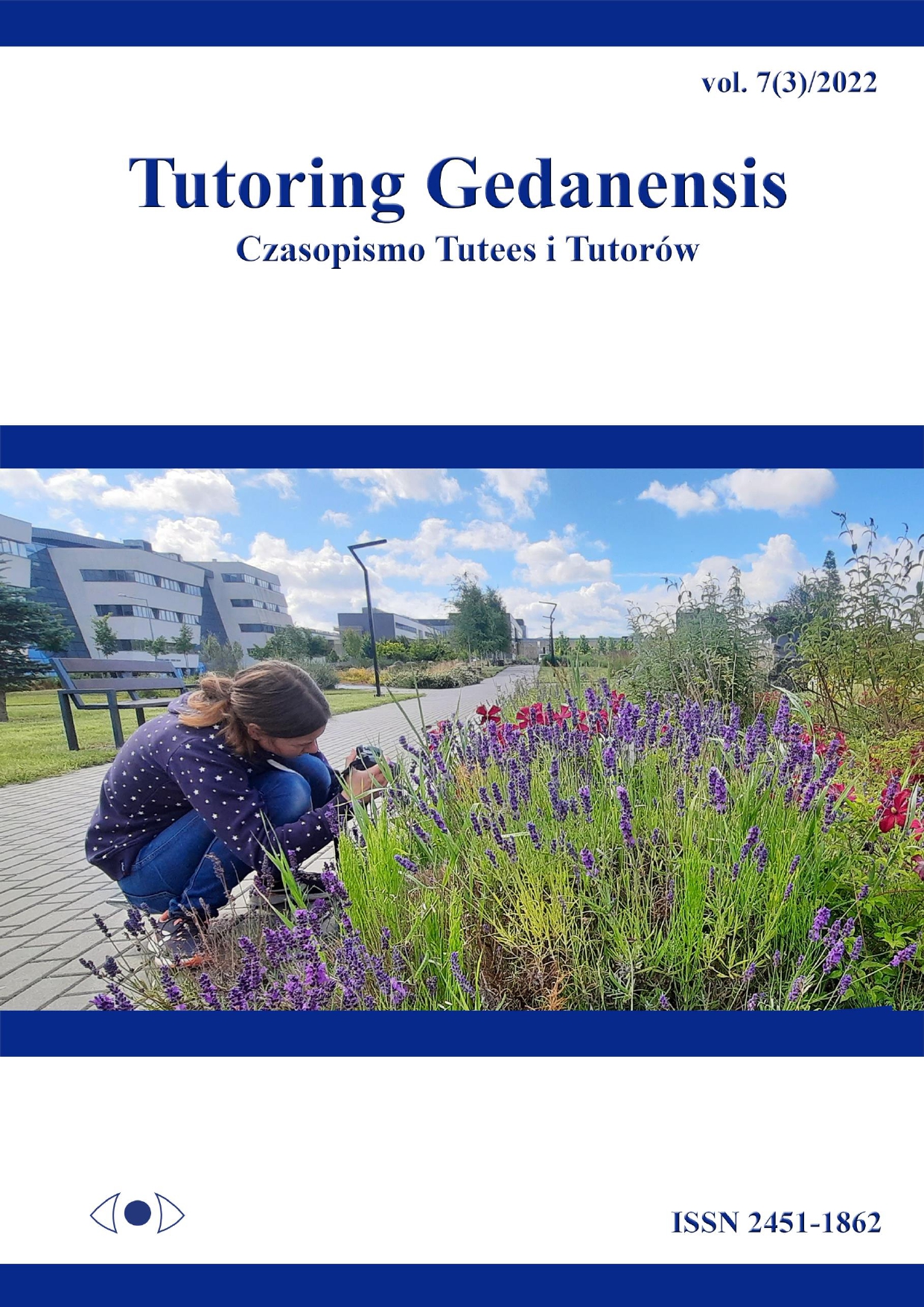Cicha pandemia pszczół
DOI:
https://doi.org/10.26881/tutg.2022.3.05Słowa kluczowe:
wymieranie pszczół, pestycydy, zmiany klimatu, choroby pszczółDownloads
Bibliografia
Cuthbertson A.G., Wakefield M.E., Powell M.E., Marris G., Anderson H., Budge G.E., Mathers J.J., Blackburn L.F., Brown M.A., 2013. The small hive beetle Aethina tumida: A review of its biology and control measures. Current Zoology, 59, 644–653.
Fries I., 2010. Nosema ceranae in European honey bees (Apis mellifera). Journal of Invertebrate Pathology, 103(1), 73–79.
Goulson D., Nicholls E., Botías C., Rotheray E. L., 2015. Bee declines driven by combined stress from parasites, pesticides, and lack of flowers. Science, 347(6229), 1255957.
Gunasekara A., Truong T., Goh K., Spurlock F., Tjeerdema R., 2007. Environmental fate and toxicology of fipronil. Journal of Pesticide Science, 32, 189-199.
Halabi N. E., Achkar R., Haidar G. A., 2013. The effect of cell phone radiations on the life cycle of honeybees. Eurocon, 2013, 529-536.
Le Conte Y., Navajas M., 2008. Climate change: impact on honey bee populations and diseases. Revue Scientifique et Technique, 27(2), 485-510.
Liu F., Wang Q., Dai P.L., Wu Y.Y., Song H.K., Zhou T., 2008. Natural stripe of Microsporidia of honeybee in China. Chinese Bulletin of Entomology, 45, 963- 966.
Monceau, K., Bonnard, O., Thiéry, D., 2014. Vespa velutina: a new invasive predator of honeybees in Europe. Journal of Pesticide Science, 87, 1-16.
National Research Council. 2007. Status of Pollinators in North America. Washington, DC: The National Academies Press. https://doi.org/10.17226/11761.
Nazzi F., Brown S.P., Annoscia D., Del Piccolo F., Di Prisco G., Varricchio P., Della Vedova G., Cattonaro F., Caprio E., Pennacchio F., 2012. Synergistic parasite-pathogen interactions mediated by host immunity can drive the collapse of honeybee colonies. PLOS Pathogens, 8, e1002735.
Neov B., Georgieva A., Shumkova R., Radoslavov G., Hristov P., 2019. Biotic and abiotic factors associated with colonies mortalities of managed honey bee (Apis mellifera). Diversity, 11(12), 237.
Nicholson C.C., Egan P.A., 2020. Natural hazard threats to pollinators and pollination. Global Change Biology, 26(2), 380-391.
Oldroyd B. P., 2007. What's killing American honey bees? PLOS Biology, 5(6), e168.
Potts S.G., Biesmeijer J.C., Kremen C., Neumann P., Schweiger O., Kunin W.E., 2010. Global pollinator declines: trends, impacts and drivers. Trends in Ecology & Evolution, 25(6), 345-353.
Ptaszyńska A.A., 2020. Insektagedon - czy pszczoły przetrwają? Pasieka, 5, 14.
Ptaszyńska A.A., Borsuk G., Anusiewicz M., Mulenko W., 2012. Location of Nosema spp. spores within the body of the honey bee. Medycyna weterynaryjna, 68(10), 618-621.
Rosenkranz P., Aumeier P., Ziegelmann B., 2010. Biology and control of Varroa destructor. Journal of Invertebrate Pathology, 103 (1), 96-119.
Sánchez-Bayo F., Wyckhuys A.G.K., 2019. Worldwide decline of the entomofauna: A review of its drivers. Biological Conservation, 232, 8-27.
Shepherd S., Lima M.A.P., Oliveira E.E. Sharkh, S.M., Jackson, C.W., Newland, P.L., 2018. Extremely Low Frequency Electromagnetic Fields impair the Cognitive and Motor Abilities of Honey Bees. Scientific Reports 8, 7932.
Van Engelsdorp D., Evans J. D., Saegerman C., Mullin, C., Haubruge E., Nguyen B.K., Frazier M., Frazier J., Cox-Foster D., Chen Y., Underwood R., Tarpy D.R., Pettis J.S., 2009. Colony collapse disorder: a descriptive study. PLOS One, 4(8), e6481.
Wenzel K.W., 2016. Agricultural pesticides and honeybees. The role of neonicotinoid insecticides in bee colony death: a synopsis of recent literature, with special reference to the situation in Germany. The Beekeepers Quarterly, 123, 23-29.
Źródła internetowe
US EPA, OCSPP. Colony Collapse Disorder. US EPA. https://www.epa.gov/pollinator-protection/colony-collapse-disorder [dostęp: 31.03.2022].
WindowBee, https://windowbee.com/ [dostęp: 16.09.2022]
Globe Project. Czym są zmiany klimatu? https://globeproject.pl/pl/zmiany-klimatu/czymsa-zmiany-klimatu [dostęp: 03.04.2022].
Źródła zdjęć
Ryc. 1A. Varroa destructor. USGS Bee Inventory and Monitoring Lab from Beltsville, Maryland, USA, https://commons.wikimedia.org/wiki/File:Vespa_velutina_nigrithorax_MHNT.jpg
Ryc. 1B. Vespa velutina nigrithorax. Muséum de Toulouse, CC BY-SA 3.0, https://commons.wikimedia.org/wiki/File:Vespa_velutina_nigrithorax_MHNT.jpg
Ryc. 1C. Nosema ceranae. https://windowbee.com/nosema-ceranae-pl-2
Ryc. 1D. Aethina tumida. James D. Ellis, CC BY 3.0 https://commons.wikimedia.org/wiki/File:Small_hive_beetle.jpg

 Uniwersyteckie Czasopisma Naukowe
Uniwersyteckie Czasopisma Naukowe



